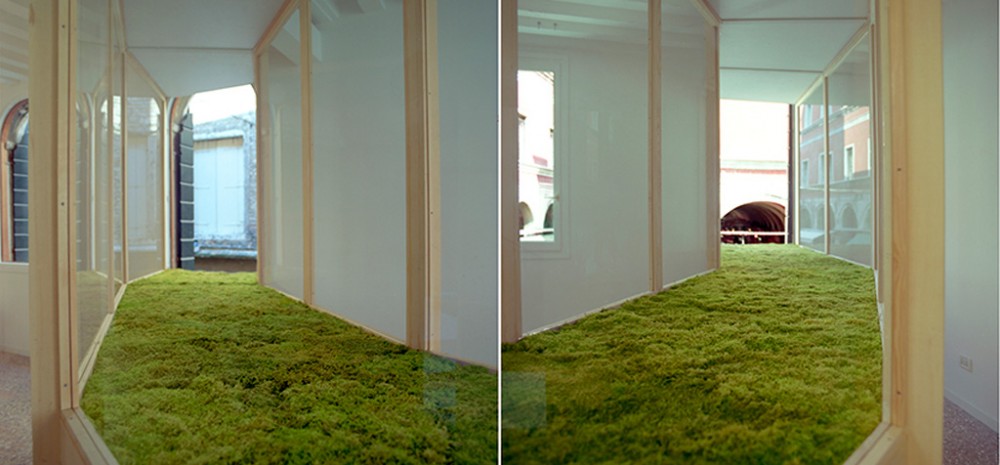Holocene Passage
La Biennale di Venezia, Mostra Internazionale di Architettura
Venice – 2002
Holocene Passage is a site-specific architectural intervention designed for the front space of the Archivio Emily Harvey.
Holocene Passage investigates two themes of Roloff’s work. The first relates architecture and human activity to larger natural systems. The second makes forces of nature visible in a confined environment encouraging a dialog between nature, the structure, and its contents. Conceptually, the moss is seen by Roloff as a bridge in time between the present and an ancient geologic past. Like the moss contained in Holocene Terrace, 1999, installed in the Lance Fung Gallery, New York, it is used as a reference to the primal conditions of sedimentary deposition, the material that later became the stone used for construction of the city’s architecture. In this context, the city is seen as a geologic formation, formed by parallel human activities: quarrying as erosion, transport as flow and construction as sedimentation. Conceptually as well as physically, Holocene Passage is a confluence of time, site, metaphor and process.
The installation is an enclosed “passage†between two open windows of the gallery space, a transparent, glass and wood-framed structure with a bed of moss whose properties may be altered by daily climate change and other natural phenomena through the open windows at either end. On dry days the moss is a dormant gray color; on moist days, to the extent that weather can reach within the structure, it is a vibrant green. Other forms of nature such as birds and insects may interact within the enclosed space. Gallery viewers will be able to observe a section of the exterior environment projecting through the gallery space.
